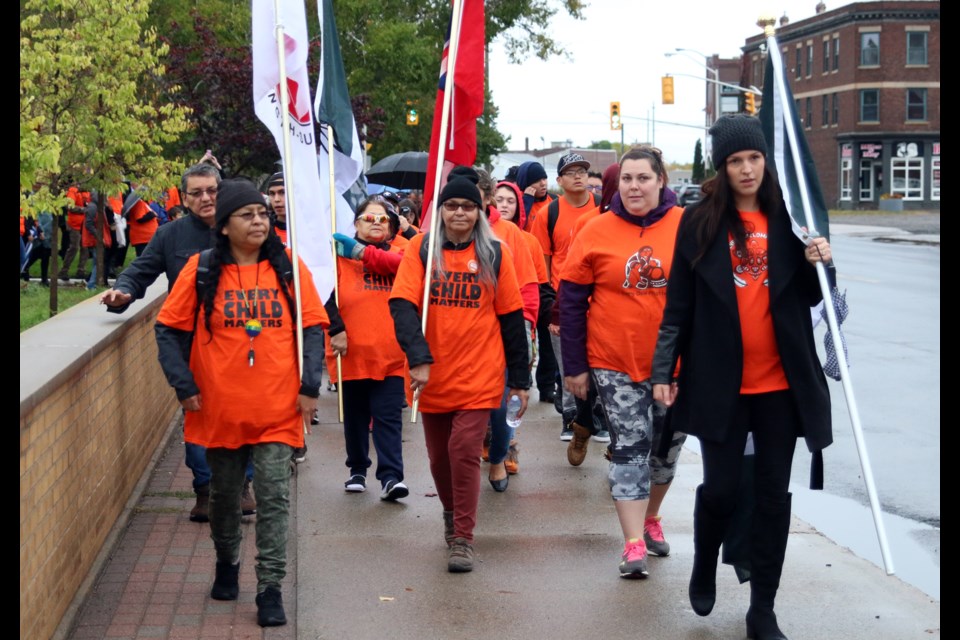THUNDER BAY - For residential school survivor, Sarahjean Cromarty, leading a procession of hundreds of people to the site of a former residential school is not only continuing her path toward healing, but she hopes is leading others on that journey as well.
“Now that I’m carrying the flag, I am very thankful. It’s part of healing during the walk,” she said. “You think about yourself and how I am doing with this walk. It’s been a healing journey for me.”
Cromarty led the walk from Paterson Park to the former site of St. Joseph’s Residential School on Franklin Street where Pope John Paul II School now stands.
“It’s good to understand why we are doing this and to educate and promote the wellness of residential school survivors, because not everyone understands it,” Cromarty said.
The march on Monday was part of Orange Shirt Day, a national movement that began six years ago in Williams Lake, B.C. during St. Joseph Mission Residential School Commemoration Project and Reunion.
During that event, elder Phyllis Webstad shared a story of how she was forced to remove an orange shirt she had worn to her first day of residential school in Williams Lake when she was six years old.
Since then, Orange Shirt Day has developed into a global movement to educate people about the residential school system and honour the many young boys and girls who died while attending.
“It’s a way for us to remember the survivors like Phyllis, who was the inspiration behind this movement, and also to honour those who never made it home,” said Nishnawbe Aski Nation Grand Chief, Alvin Fiddler.
Leading up to Orange Shirt Day, a sacred fire was lit on the grounds of Pope John Paul II School and was burning for three days.
Fiddler said Orange Shirt Day is also about educating the public on a dark period in Canadian history to ensure it is never forgotten and he feels that its message is being heard by more and more people every year.
“I was there most of the weekend and people would just drop in, young people, teachers, community members, just to sit around the fire and learn more about why we were doing it and it was so heartwarming to see that,” he said.
Hundreds of people gathered in the rain for the walk to former site of St. Joseph’s Residential School, where offerings of tobacco were made to the sacred fire, and people paid tribute to the monument honouring the survivors located on the school grounds.
Orange Shirt Day events were being held across the country and in the city, including schools, which Fiddler says shows how more and more people are willing to take the time to learn about residential schools and the impact they have had.
“Just seeing the number of people in general wanting to be more involved and learn more about this part in Canada’s history is really good,” he said.
And for those who were there and experienced it, seeing all the orange shirts walking down the sidewalk is like having someone to help you on the healing journey that has taken many steps already.
“Orange Day means to me that I am very happy to see it happen because is part of my healing,” Cromarty said. “I am on a healing journey and it’s really good for the youth to understand what it means and also the people who don’t understand that every child matters.”
